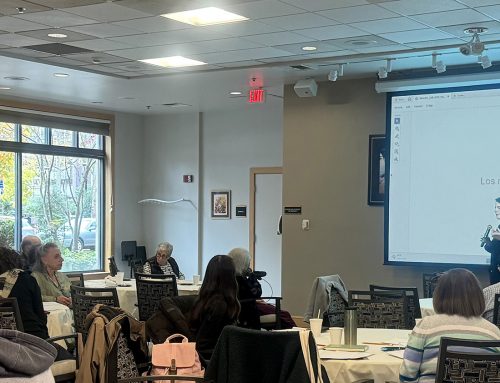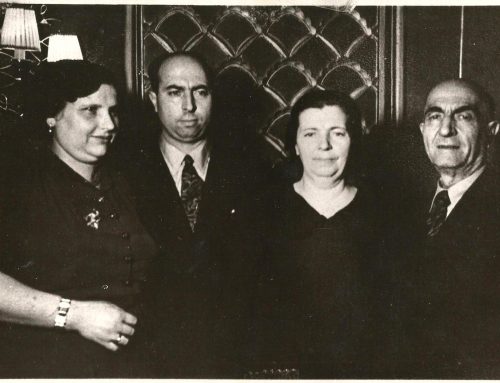
Masthead for “What Our Readers Think” section of La Bos del Pueblo, New York, 1916. Courtesy of the Jewish Historical Press, Tel Aviv University.
By Makena Mezistrano

Letter to the editor column in La Bos del Pueblo, titled “Porke No?” (Why Not?), May 26, 1916. Courtesy of the Jewish Historical Press, Tel Aviv University.
On May 26, 1916, one of New York’s Ladino newspapers, La Bos del Pueblo, published an enduring question under its section “What Our Readers Think” (Lo ke nuestros lektures pensan). Clara—a young, Russian-Jewish woman—wrote to the editor, in English, with a concern: At an event hosted by the newspaper, Clara, herself Ashkenazi, met Jack—a man who “gestured” and “spoke” like an Italian, but later told Clara that he was Jewish.
“Is it possible that a Jew who doesn’t speak Jewish (Yiddish) and doesn’t look Jewish can nevertheless have a Jewish soul?” she asked. Ironically, her question needed to be translated into Ladino for the general readership of La Bos: “Se es posible aki un Djudyo no avle el Djudio, ke no pareska komo Djudyo, i portanto ke tenga la alma Djudia?”
The irony of translating Clara’s English letter so that a Sephardic audience could understand it did not escape the La Bos editors when they wryly responded to her query. Under the headline “Porke no?” (Why not?), they assured Clara that indeed, although Jack did not speak Yiddish, he was still Jewish.
“Si, Clara,” they said, “el mansevo avlando el Espanyol, tovyendo jestos Italyanos, ke puede meldar muestro piryodiko—es Djudyo.” “The boy who speaks Spanish, has Italian gestures, who can read our newspaper, is Jewish.” (Emphasis added.)
In 2015, almost 100 years after Clara’s question was published in La Bos, Regina and Vic Amira, members of Seattle’s Ladino conversation group Los Ladineros, reenacted portions of this letter to the editor exchange at the Third International Ladino Day Celebration at the University of Washington. Unlike Clara and Jack, the Amiras are both Sephardic Jews who trace their roots to the Ottoman Empire.
Today marks 103 years since Clara’s question appeared on page six of La Bos del Pueblo. Events like International Ladino Day continue to respond to Clara’s concern by bringing awareness to the history of Sephardic Jews, and those from Ladino-speaking communities specifically, in order to diversify Jewish history.
The La Bos article and response, translated by Aviva Ben-Ur, were included in Sephardi Lives: A Documentary, 1700-1950 by Professor Julia Phillips Cohen, Associate Professor of History and Jewish Studies at Vanderbilt University, and Sarah Abrevaya Stein, Professor of History and Maurice Amado Chair in Sephardic Studies at UCLA, who presented their work at the event.







Es muy ermozo tomar saludes de antes 100 anyos, I ver je las probkemas son mesmas.